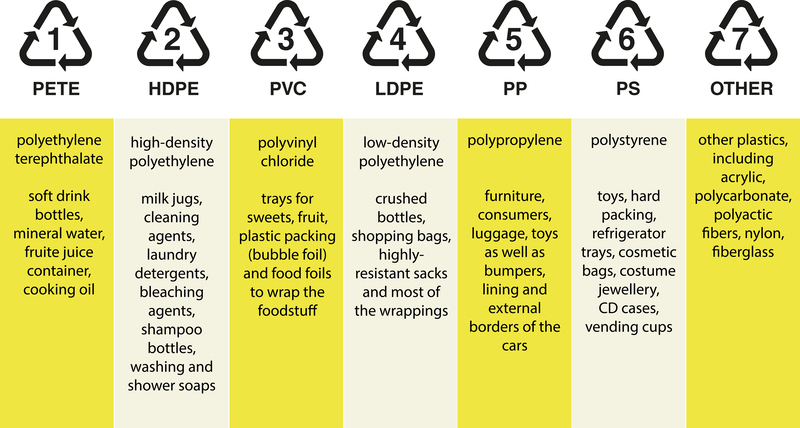Sources of Waste in Business Environments
Posted on 08/06/2025
Sources of Waste in Business Environments
Waste is an inevitable component of any business operation, but identifying and mitigating these sources can lead to significant cost savings and operational efficiencies. This article delves into the various sources of waste in business environments and explores strategies for minimizing their impact.
Understanding Waste in Business
In the context of business operations, waste refers to any process, activity, or material that does not add value to the end product or service. The concept of waste is not limited to physical materials but also extends to inefficiencies in processes, overproduction, and the underutilization of resources. By understanding and addressing these sources, businesses can improve productivity and profitability.

Common Sources of Waste
Overproduction
Overproduction occurs when a company produces more goods or services than are needed at a given time. This type of waste leads to higher inventory costs, increased storage requirements, and the risk of obsolescence. Streamlining production processes to align with demand can help mitigate this issue.
Waiting Time
Waiting time is the idle time that occurs when materials, information, or people are not available to keep processes moving. This can happen due to machine breakdowns, inefficient scheduling, or delays in decision-making. Implementing better workflow management and regular maintenance schedules can help reduce waiting time.
Transportation Waste
Excessive transportation is a significant source of waste. It involves moving materials and products more than necessary, often due to poor layout planning or inefficient supply chain management. Optimizing logistics and plant layouts can help minimize this type of waste.
Inventory Waste
Maintaining excessive inventory ties up capital and incurs storage costs. Additionally, it increases the risk of damage, obsolescence, and spoilage. Adopting Just-in-Time (JIT) inventory systems can significantly reduce inventory waste.
Motion Waste
This type of waste involves unnecessary movements of people or equipment within a workspace. Inefficient workplace design, poor ergonomics, and inadequate tools can contribute to motion waste. Conducting time and motion studies can help in redesigning the workflow to eliminate unnecessary movements.
Defects and Rework
Defects in products or errors in services lead to waste in the form of rework, returns, and loss of customer satisfaction. Implementing rigorous quality control measures and adopting a continuous improvement mindset can help reduce defects.
Over-processing
Over-processing occurs when more work is done on a product or service than is required by the customer. This can result from using more expensive materials than necessary, excessive inspections, or redundant processes. Analyzing customer requirements and streamlining processes to meet but not exceed these requirements can mitigate over-processing waste.
Hidden Sources of Waste
Underutilization of Talent
Human resources are often underutilized in business environments. This happens when employees' skills and potential are not fully harnessed due to poor job design, inadequate training, or lack of opportunities for growth. Encouraging a culture of continuous learning and providing opportunities for employees to use their skills effectively can help in fully leveraging human capital.
Poor Communication
Ineffective communication can lead to misunderstandings, errors, and delays. This is often an overlooked source of waste but can have a significant impact on productivity. Implementing clear communication channels and regularly reviewing communication processes can help in minimizing this source of waste.
Environmental Waste
Businesses often overlook the environmental impact of their operations, which can result in waste in the form of energy consumption, water usage, and emissions. Adopting sustainable practices and investing in energy-efficient technologies can help reduce environmental waste.
Strategies for Reducing Waste
Lean Manufacturing
Lean manufacturing principles focus on creating more value for customers with fewer resources. The core idea is to eliminate waste and optimize processes. Tools such as value stream mapping, 5S (Sort, Set in order, Shine, Standardize, Sustain), and Kaizen (continuous improvement) are commonly used in lean manufacturing to identify and eliminate waste.
Total Quality Management (TQM)
Total Quality Management is a holistic approach to long-term success through customer satisfaction. It involves all members of an organization in improving processes, products, services, and the culture in which they work. Techniques such as Six Sigma, which focuses on reducing variability and defects, are integral to TQM.
Automation and Technology
Investing in automation and technology can significantly reduce various forms of waste. Automation can streamline repetitive tasks, reduce errors, and enhance productivity. Technologies such as AI and machine learning can provide insights into inefficiencies and suggest improvements.
Employee Involvement
Engaging employees in identifying and addressing waste can lead to innovative solutions and a more efficient operation. Encouraging suggestions, providing feedback, and recognizing contributions can foster a culture of continuous improvement.

Case Studies
Toyota Production System (TPS)
The Toyota Production System is often cited as a benchmark in waste reduction. By implementing lean manufacturing principles, Toyota has significantly reduced waste and improved efficiency. Their focus on continuous improvement and employee involvement has been key to their success.
GE's Six Sigma Initiative
General Electric's adoption of Six Sigma has led to substantial improvements in quality and efficiency. By focusing on data-driven decision-making and defect reduction, GE has been able to minimize various forms of waste and achieve significant cost savings.
Conclusion
Understanding the sources of waste in business environments is the first step towards creating more efficient and profitable operations. By focusing on both obvious and hidden sources of waste and implementing strategies such as lean manufacturing, Total Quality Management, and automation, businesses can significantly reduce waste and improve their bottom line.
In an increasingly competitive and resource-constrained world, minimizing waste is not just an operational necessity but also a strategic imperative. By recognizing the diverse sources of waste and actively pursuing strategies to eliminate them, businesses can achieve sustainable growth and long-term success.

 020 3744 5548
020 3744 5548













